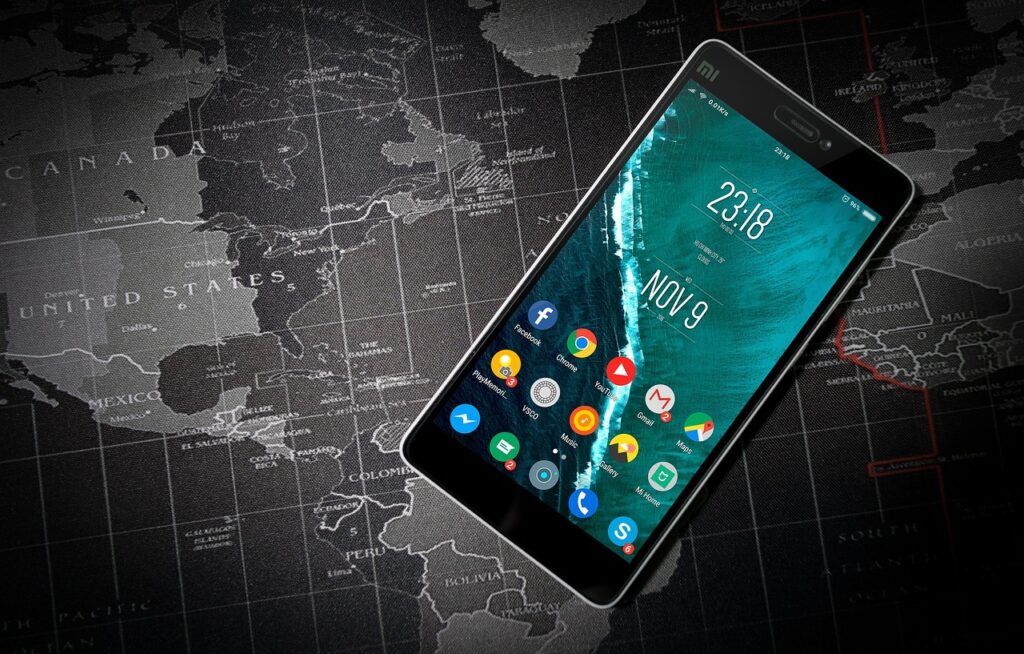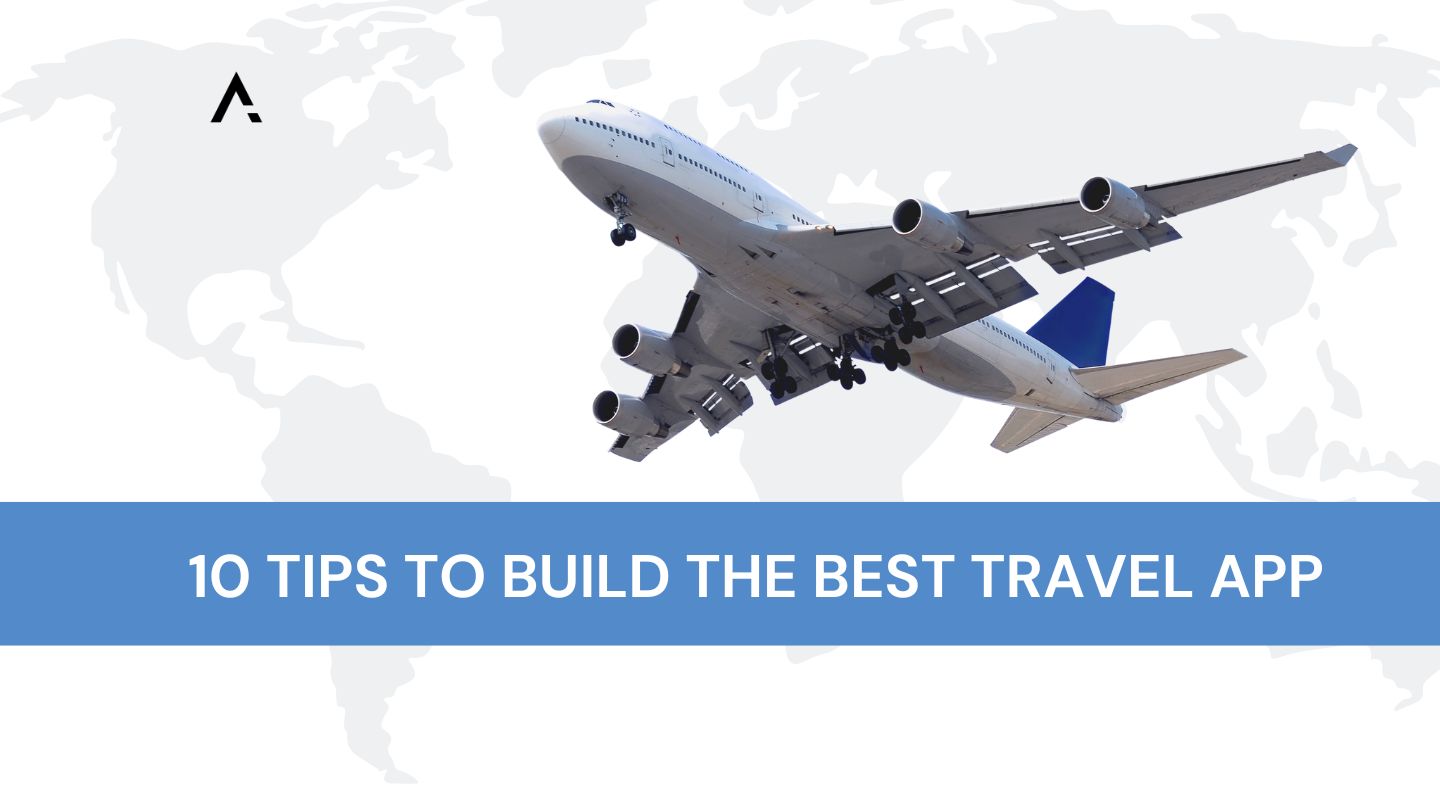A significant 76% of international travelers use travel apps that are designed to ease the burdens and tension associated with their journeys. In today’s highly competitive travel industry, demand for a high-quality travel app is always high. Travelers rely heavily on mobile applications for trip planning and management,right from selecting destinations to checking into hotels.
In order to stand out in an oversaturated marketplace and among competitors, building top-tier apps is imperative if one wishes to remain successful. Be it flight booking, itinerary planning, or providing travel recommendations. Your travel app must offer an exceptional user experience coupled with rich features and seamless functionality in order to compete successfully among competitors in its sector.
Here are 10 essential tips that should help make the journey smooth and successful:

1. Deliberate on your target audience
A HubSpot survey reveals that 82 percent of marketers consider high-quality customer data crucial for their success. Creating an exceptional booking app begins by understanding its target users. Are you designing it for business travelers, adventure seekers, or families? Each group may have distinct requirements.
For example, business travelers might prioritize efficient booking options, while leisure travelers
might seek unique local experiences, personalized recommendations, and flexible itineraries.
Conduct thorough market research, gather user feedback, and track current trends to develop features specifically targeted toward your audience.
Example:
TripActions, now known as Navan, is an app tailored to corporate travelers. It provides tools specifically for business travel, like simplified booking options and expense tracking. Plus, it provides 24/7 support teams for corporate users who value efficiency, cost management, and support. These features ensure users’ needs are being met.
Key takeaway: Understanding user preferences is of utmost importance in offering features that engage and benefit them.
2. Prioritize an intuitive User Experience (UX)
Approximately 74% of users are inclined to revisit websites that offer an excellent mobile experience. Furthermore, 90% of smartphone users indicate that a positive user experience significantly boosts their likelihood of continuing to shop.
A user-centric design approach to the travel app is paramount to its success, with users being able to seamlessly move from the home screen to the checkout process without hassle or difficulty.
Integrate social media login options or email logins where available in order to simplify registration/login processes while eliminating unnecessary additional steps during booking or itinerary planning processes.
Make your design responsive and adaptive across various devices and screen sizes; your app should function equally well on smartphones, tablets, and desktop computers.
Example:
Hopper’s user interface is highly user-friendly. Color-coded calendars display travel dates that offer cheap flights and dates that are pretty expensive. Hopper also keeps its users engaged throughout their booking experience by keeping their navigation simple, thus easing any kind of stress related to booking travel arrangements.
Key takeaway: Prioritize ease-of-use and responsiveness so your app users can navigate it effortlessly across devices.
3. Provide comprehensive search and filter options
Only 16% of major e-commerce websites provide a good filtering experience. Travelers expect to locate their ideal destinations, accommodations, and services quickly. Make it easier for users to do just that with a practical search function that lets them filter results by budget, location, review dates, etc.
Advanced filters like eco-friendly hotels or pet-friendly accommodations cater specifically to niche markets for an enhanced user experience.
Search functions can save users both time and effort while increasing engagement by helping them locate what they’re searching for.
Example: On its app, Booking.com has implemented sophisticated filters aimed at helping users quickly locate what they are searching for, be it price range, location, or specific amenities such as pet-friendly or eco-friendly stays. These advanced search capabilities help users quickly discover what they require while simultaneously improving overall booking experiences.
Key takeaway: An efficient search and filter system is critical in helping users locate relevant information quickly and effectively.

4. Provide real-time updates and notifications
A study revealed that applications that undergo regular updates experience a 4x increase in user retention compared to those that are updated less often. A vital aspect of any booking app should be real-time updates and notifications that keep users up-to-date about flight delays, gate changes, hotel check-in times, weather forecasts, and emergency alerts. These updates not only enhance user experiences but can provide critical information when needed most, ensuring that users remain helpful throughout their travel experience with your app.
Sending notifications about price reductions, exclusive offers, or promotions can increase user engagement and encourage continued usage.
Example: App in the Air app offers real-time updates about flight delays, boarding gates, weather conditions, and travel-related essentials such as weather forecasting. Users receive alerts if their flight changes and stay informed throughout their trip.
Key takeaway: Real-time updates will keep users engaged and enhance their overall travel experience.
5. Provide a one-stop booking solution
According to recent findings, 71% of adults in the U.S. find planning their travel to be at least somewhat stressful. This figure rises to 78% for parents with children under 18 and 77% among mothers specifically.
A top travel app must offer seamless booking capabilities across flights, hotels, car rentals, and local experiences. Users expect their entire trip to be organized from within one app rather than switching platforms to book it all!
To achieve this goal, consider integrating with APIs from airlines, hotels, and travel service providers who can offer real-time availability and pricing data via real-time availability updates and price notifications.
Enabling multiple payment options, credit cards, mobile wallets, and local currencies adds convenience and reduces friction during the booking process.
Example: Expedia offers users an integrated travel booking experience by connecting them with various providers so that they don’t need to use multiple platforms when planning trips.
Key takeaways: Provide comprehensive booking services in one central place and facilitate multiple payment methods to optimize user convenience.
6. Provide offline access
U.S. companies can incur international cellular roaming fees of up to $693 for each traveler on a trip. While travelers typically have access to the internet, there may be times when they need more connectivity, particularly in remote areas or during flights. So, making essential information like itineraries, maps, and bookings available offline will significantly enhance their travel experience and enable your app to remain useful even without data/Wi-Fi connectivity. Providing offline functionality will make users’ lives easier!
Offline access can be precious for maps and navigation services as it allows travelers to discover new destinations without incurring expensive roaming charges.
Example: Google Maps. Although not explicitly tailored as a travel app, Google Maps remains popular with travelers as an offline navigation solution that offers directions without internet connectivity—a convenient feature when traveling in remote regions or trying to avoid data charges.
Key takeaway: Provide offline access to critical travel information, such as itineraries and maps, to increase user satisfaction and enhance traveler satisfaction.
7. Consider implementing multi-language and multi-currency support
Did you know that over 29% of businesses lose customers because they do not provide multilingual support? Booking apps target an international user base, so supporting multiple languages and currencies is of vital importance for creating a personalized user experience and making your app accessible to a broader user base. When you embrace this, it ensures your app stays competitive against those from across borders who require content in their native tongue or use local currency prices, something international travelers, in particular, need in their experience with travel apps.
Employ localization tools to adjust your app’s language and currency settings based on the user’s location or preferences. This way, you can guarantee that users have an effortless experience wherever they may be in the world!
Example: Airbnb supports over 30 languages and currencies, making the service accessible worldwide. Furthermore, their app automatically adjusts language settings based on where users are established to ensure a personalized travel experience for users worldwide.
Key takeaway: Allowing travelers to access and use your app easily across countries requires multilingual support and multi-currency support in your app. It makes your experience more user-friendly for global travelers who may use multiple currencies when making decisions on travel purchases.

8. Focus on security and data privacy
A significant 85% of adults worldwide express a desire to take greater measures to safeguard their online privacy. Travelers value knowing their sensitive travel details, such as passport data, credit card data, and travel itineraries, will remain protected within your app’s confines. Providing robust data privacy protection should never be optional, as travelers want the reassurance that their data is safe when using your app.
To protect user data, implement strong encryption protocols, multi-factor authentication, and secure payment gateways. Communicate your app’s privacy policy clearly to give users control over their information, such as allowing them to delete their accounts or payment information after their trip has concluded.
Example: Skyscanner takes data security very seriously with robust encryption protocols and safe payment gateways, offering its users peace of mind knowing their payments and travel plans will stay safe within its app – which makes Skyscanner an attractive option among privacy-oriented travelers.
Key takeaway: Implement top-of-the-line security measures to safeguard user data and build relationships with your audience.
9. Integrate AI for personalization and recommendations
Nearly 92% of businesses are leveraging AI-driven personalization to foster growth. Artificial intelligence can transform your travel app by offering tailored recommendations based on users’ preferences, behavior, and past bookings. AI algorithms may suggest destinations, activities, or accommodations explicitly tailored to individual user interests. At the same time, chatbots powered by AI technology provide 24/7 customer service, answering common inquiries or offering help when booking travel reservations.
AI can enhance user engagement by identifying booking trends and anticipating travel patterns. This way, you can send targeted promotions at just the right time to keep users happy!
Example: Kayak’s AI-driven travel technology offers personalized recommendations based on previous bookings, preferences, and browsing histories to deliver tailored destination suggestions that align with user interests for travel planning that’s more accessible and relevant.
Key takeaway: Leveraging AI to provide personalized recommendations and exceptional customer support through chatbots can lead to improved recommendations and customer experience.
Approximately 5.17 billion people, representing 63.7% of the global population, actively use social media. Travel is inherently social. So many users enjoy sharing their travel experiences with family, friends, or fellow travelers. By offering social sharing features through your app, travelers will have an easier way to post images, reviews, and travel updates directly onto their social media profiles from within your app.
Additionally, developing an app with communities for users—like forums, travel groups, or local guides—will encourage users to connect and exchange tips or advice, leading to improved engagement levels and the possibility of building up a loyal user base.
Key takeaways: Integrating social sharing and community engagement features can foster an atmosphere of interconnection among users.
Example: Polarsteps allows users to share and document their travel journey in real time through its digital travel journal feature, creating an online travel logbook. Polarsteps’ community features enable travelers to connect with fellow travelers, get recommendations, and exchange experiences—creating an enjoyable travel experience in which socializing with fellow travelers becomes possible and interactive travel becomes part of everyday life.
Conclusion
Building the ideal travel app requires an in-depth knowledge of user needs and preferences combined with advanced technology and seamless functionality. By emphasizing personalized user experiences, real-time updates, comprehensive booking options, and robust security, your app can stand out in its competitive marketplace.
Remember, travel apps shouldn’t just provide services. Instead, they should enhance the entire traveling experience. From AI-powered recommendations, offline access, and social sharing features to AI integration or simply social sharing options, well-crafted travel apps have become indispensable tools for modern travelers.
Now is the time to implement these tips and ensure your travel app provides users with all of the convenience, personalization, and security expected of a top-tier travel app.
Start your journey with AVOW today! We offer top-tier app marketing services to elevate your travel app globally with mobile OEM advertising.
Want to unlock the full blueprint of how to build and market a travel app? Discover all the secrets in our Ultimate Guide to Building and Marketing a Travel App!
About the Author






